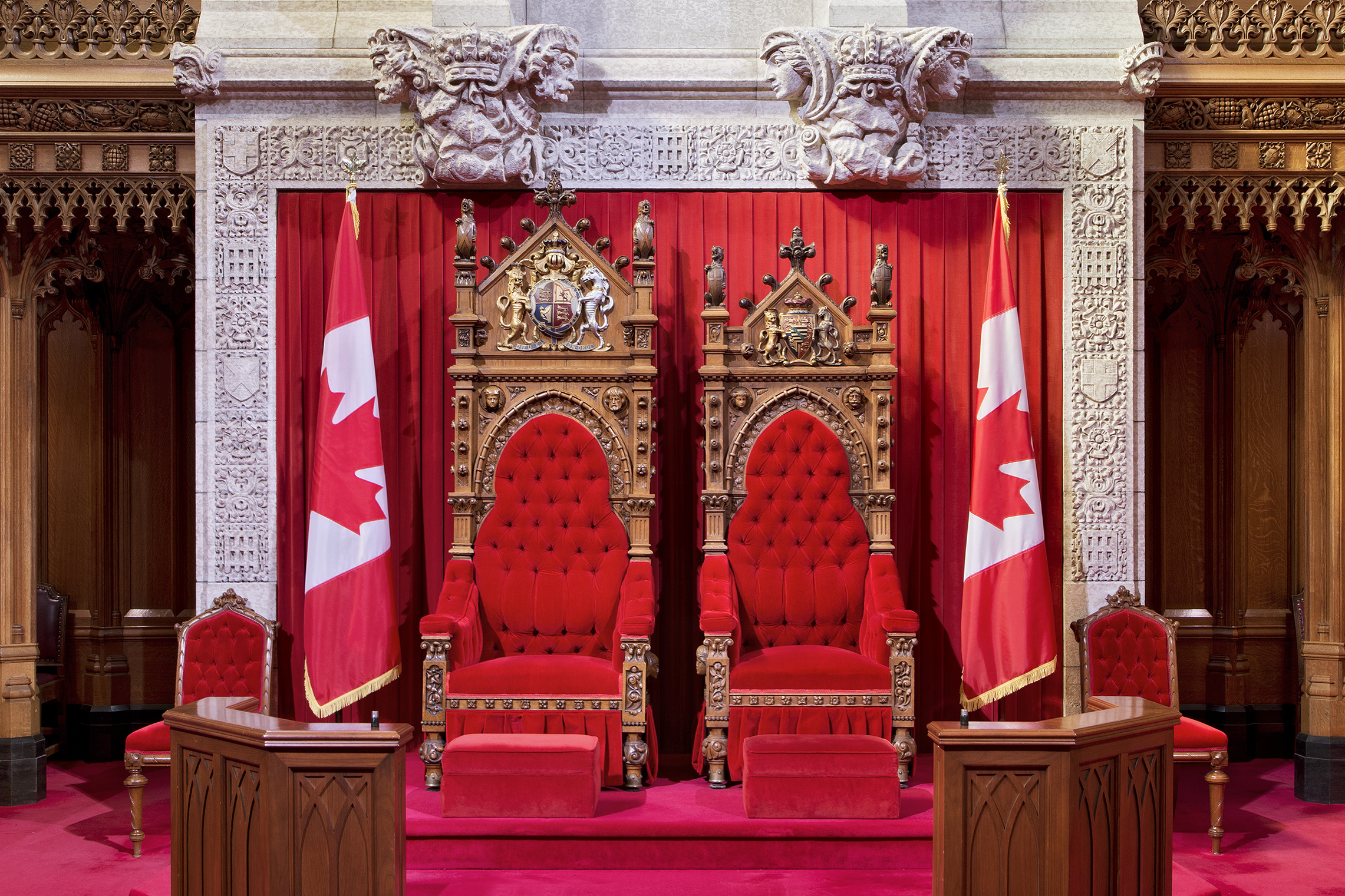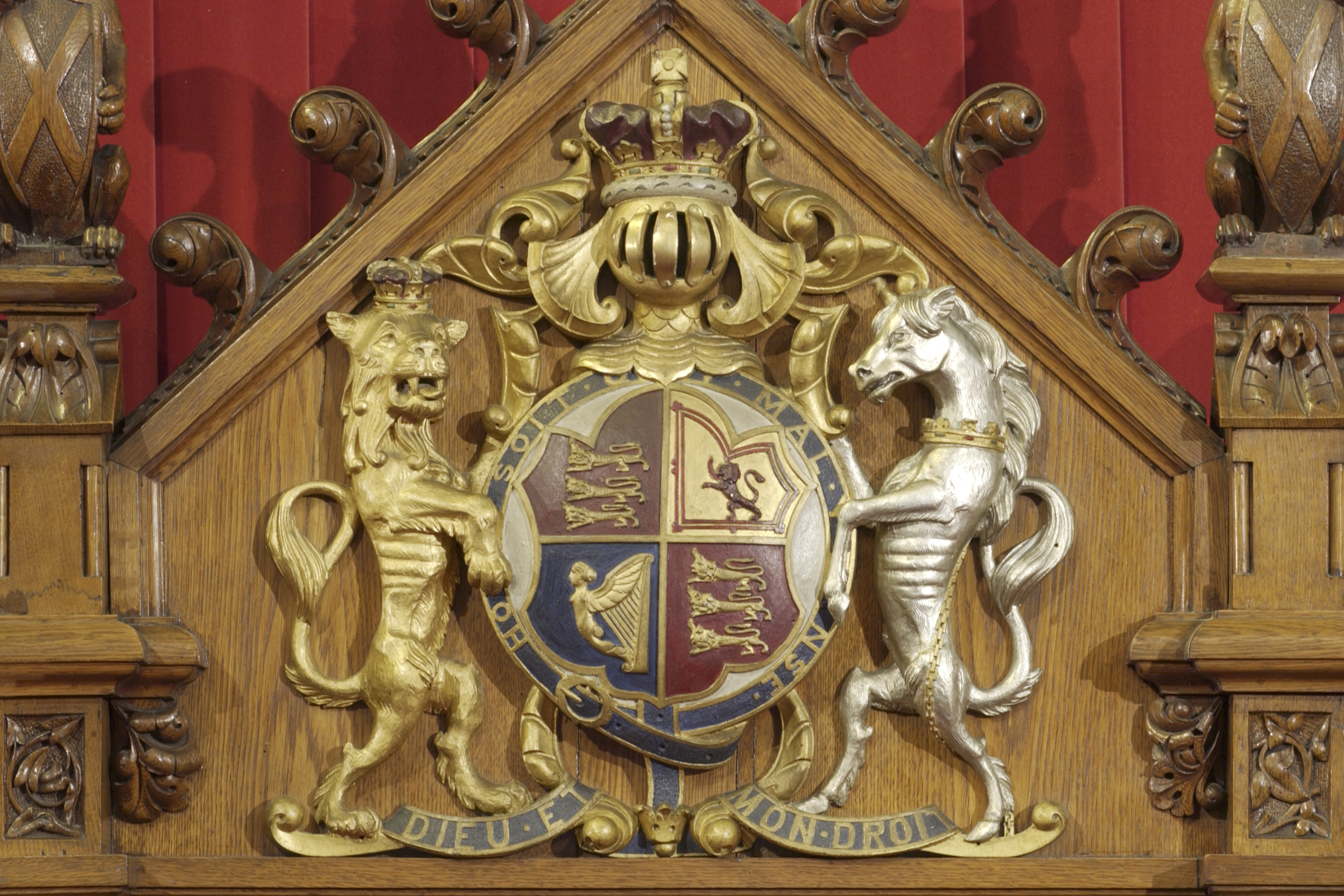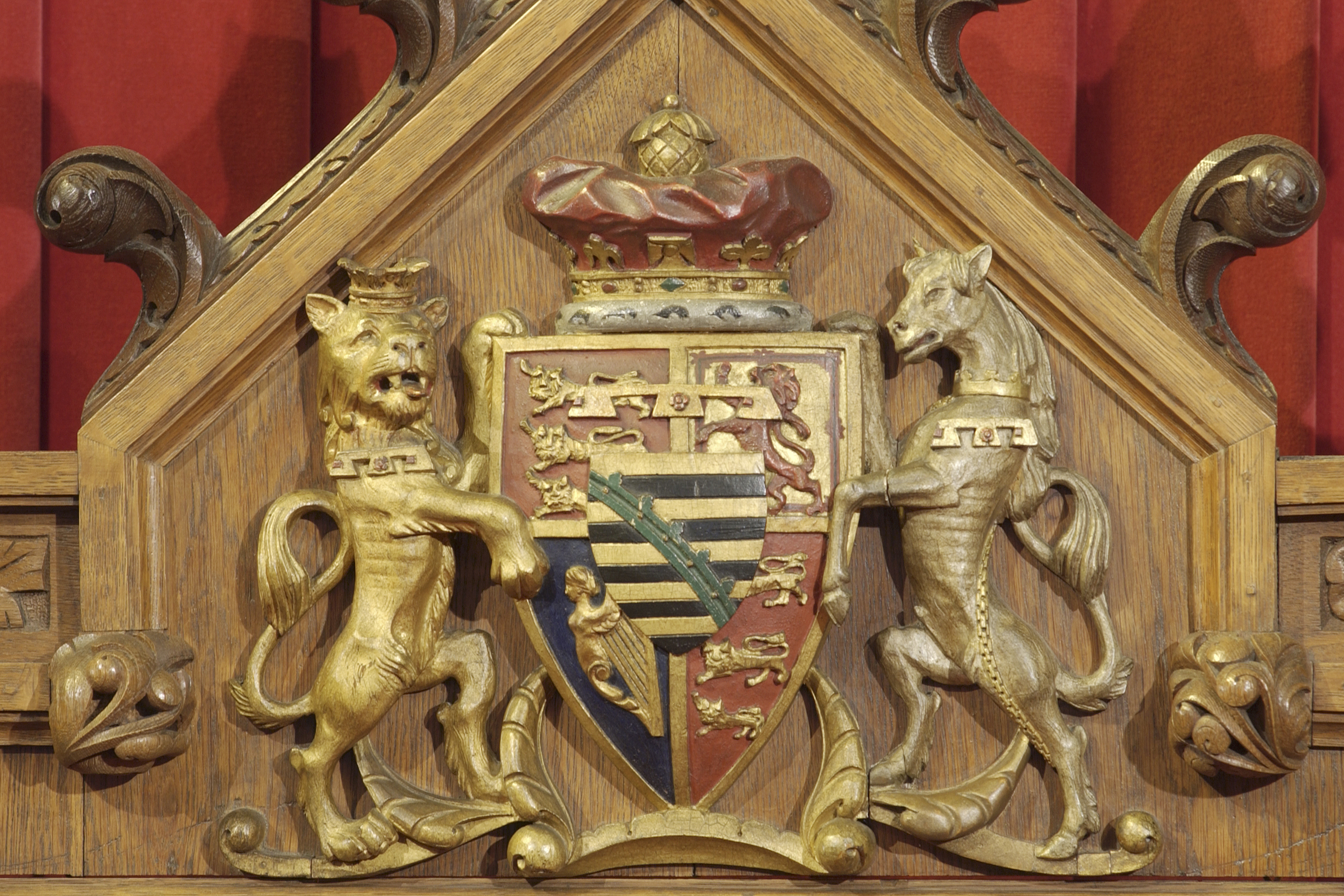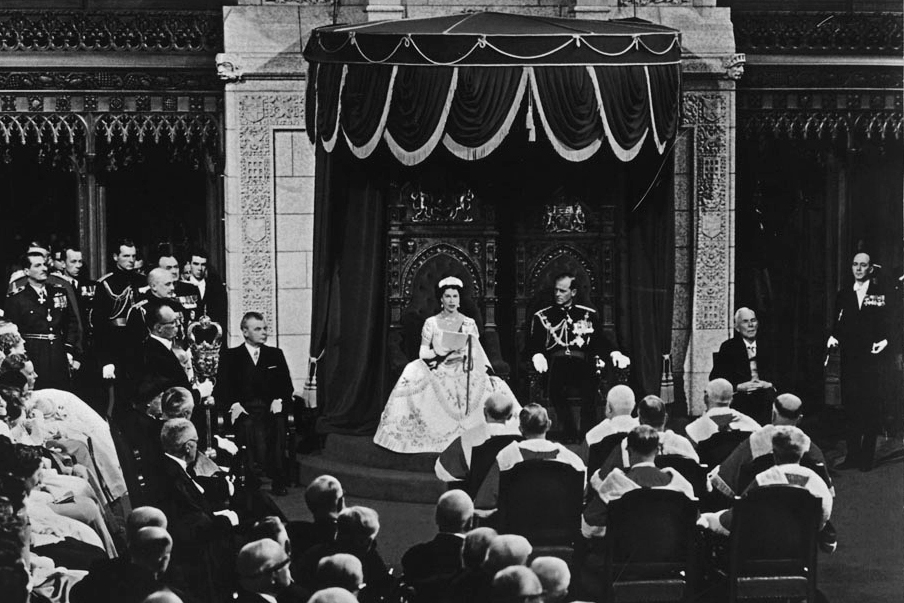Senate throne takes centre stage for Governor General’s swearing-in

Canada’s most significant state ceremony took place in the Senate this week, affirming the authority of the Crown and showcasing one of the country’s most prized artistic treasures.
Engineer and astronaut Her Excellency the Right Honourable Julie Payette was installed as Canada’s 29th Governor General on Monday. She succeeds the Right Honourable David Johnston as the representative of Canada’s head of state, Queen Elizabeth II, inheriting a slate of ceremonial responsibilities which include summoning, proroguing and dissolving Parliament, reading the Speech from the Throne and granting Royal Assent.
The installation of a new Governor General takes place roughly every five years. The sovereign’s throne always takes centre stage on this occasion.
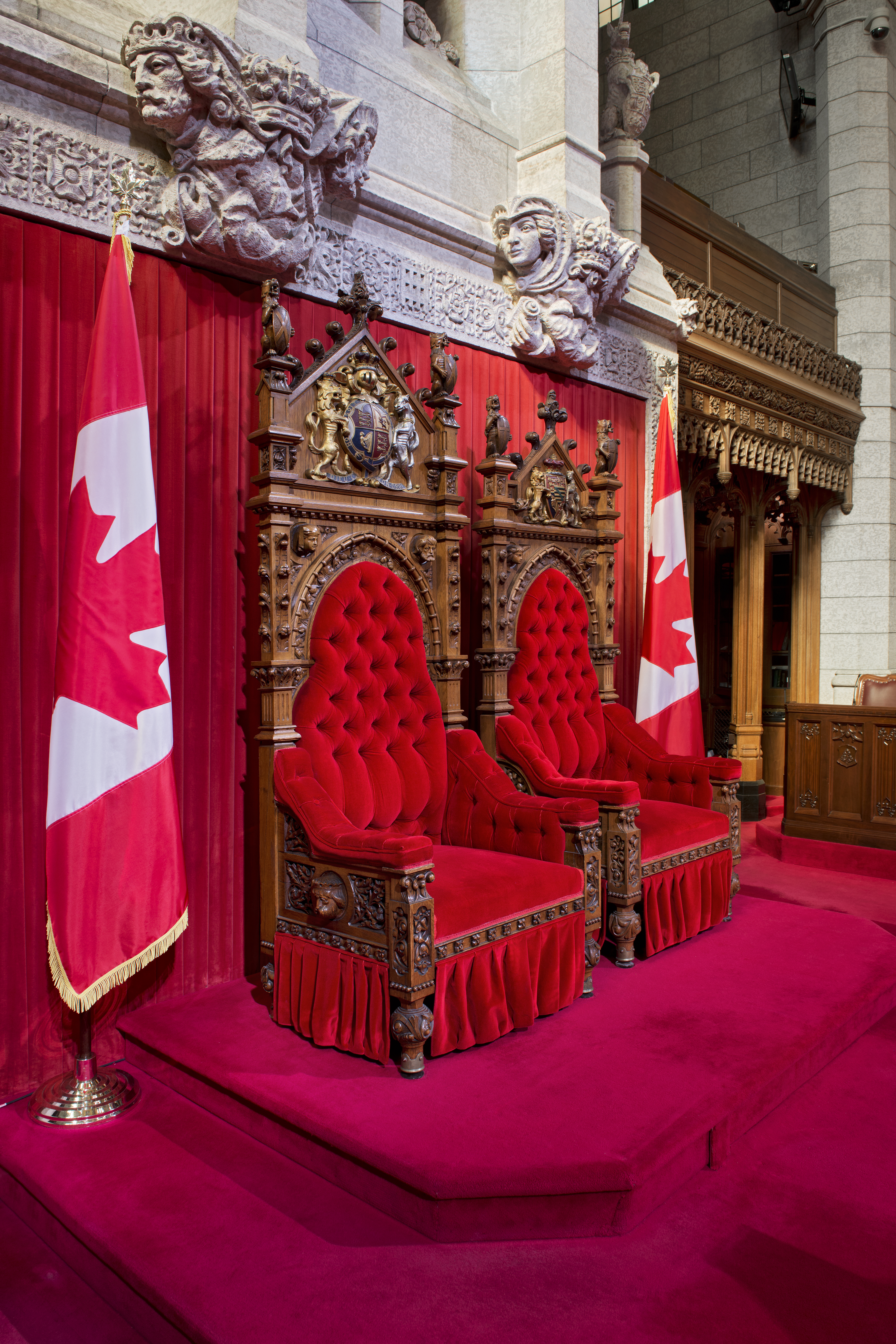
The throne and its smaller companion, the consort’s throne, were commissioned in 1878 when the Marquess of Lorne was appointed Canada’s fourth Governor General. He and his wife, Princess Louise, Queen Victoria’s fourth daughter, were the first royals to occupy Rideau Hall. They brought unprecedented glamour to Victorian-era Ottawa and became immensely popular, hosting ice-skating parties and lavish balls.
The exquisite white-oak thrones were carved by Holbrook and Mollington, the most sought-after workshop in the country, for $329.70 — equivalent to $15,000 today. The firm made its reputation working on the Library of Parliament 15 years earlier and brought the same sense of Gothic-revival exuberance to the thrones. Plant motifs run riot — oak leaves, English roses and Scottish thistles. Medallion heads peer out from either side, representing royal attendants. Lions and unicorns, symbolizing England and Scotland, crown the gabled backs. The larger throne bears the coat of arms of the United Kingdom. The smaller bears Princess Louise’s arms.
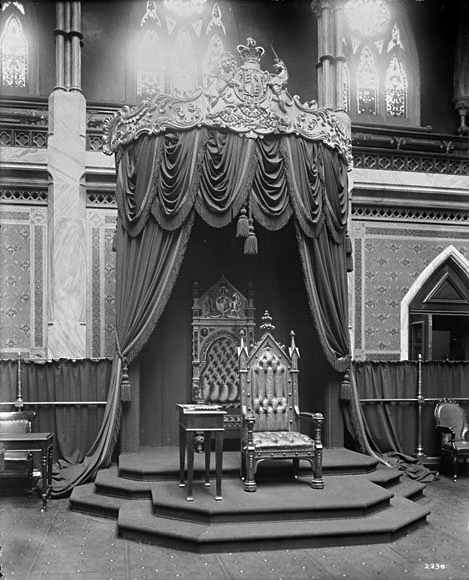
At the end of Lorne’s term, the Canadian government shipped the smaller throne to England as a gift to Princess Louise. The larger remained on Parliament Hill, where it survived the 1916 fire and moved with the Senate to temporary lodgings in Ottawa’s Victoria Memorial Museum, now the Canadian Museum of Nature. When the rebuilt Centre Block opened in 1922, the throne took its place at the north end of the new Chamber.
Its companion eventually returned to Canada in time for the 1939 royal visit by King George VI and Queen Elizabeth, the Queen Mother. The sovereign’s throne has twice been used by Queen Elizabeth II, when she opened Parliament in 1957 and when she read the throne speech during her Silver Jubilee tour in 1977.
“The thrones are unique Canadian heirlooms,” says Senate Speaker George J. Furey. “So much priceless 19th-century carving was lost in the 1916 fire. The thrones are among our few connections to the original Centre Block.”
